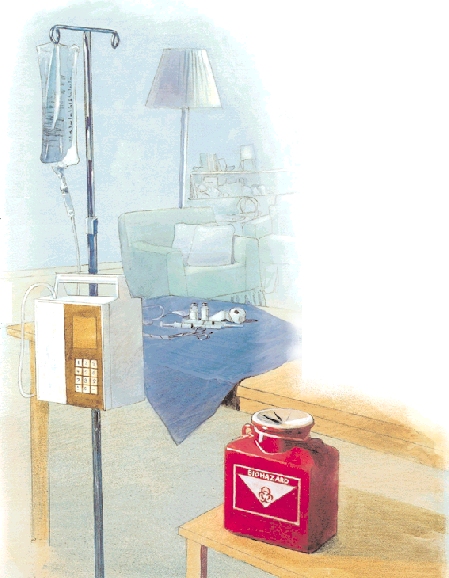Home Infusion Therapy: Checking Your Supplies
With infusion therapy, medications or fluids flow through a flexible tube (catheter) that's placed in a vein or just under the skin-usually on your arm or chest.
A nurse will show you how to set up your home infusion system. Once you know what to do, treatment will become part of your daily routine. Use the checklist below to make sure you have all the things you need. If anything is missing or damaged, call the supply company right away.

 Bag or Bottle
Bag or Bottle
Your doctor prescribes your medication or fluid. It comes in a bag, or sometimes in a bottle. Be sure to store it as directed on the package.
 Pole or Hook
Pole or Hook
The bag or bottle hangs on a pole or on a hook on the wall. Hanging the bag allows gravity to "feed" the medication or fluid into the tubing.
 Tubing
Tubing
Clear plastic tubing carries the medication or fluid from the bag or bottle to the catheter in your arm or chest.
 Pump or Clamp
Pump or Clamp
A pump or clamp controls how fast the medication or fluid flows through the tubing. You can adjust a clamp by hand. A pump is set for the correct flow. Never change the flow unless the doctor or nurse tells you to do so.
 Needles and Syringes
Needles and Syringes
You insert the tubing into the catheter with a needle or a valve. Before and after treatment, you flush the catheter with a syringe full of saline solution.
 Dressing and Tape
Dressing and Tape
The catheter is covered with a sterile dressing to help prevent infection. Tape holds the dressing and the tubing in place.
 Sharps Container
Sharps Container
Used needles and syringes must be put in a sharps container. This helps prevent punctures and the spread of infection.












